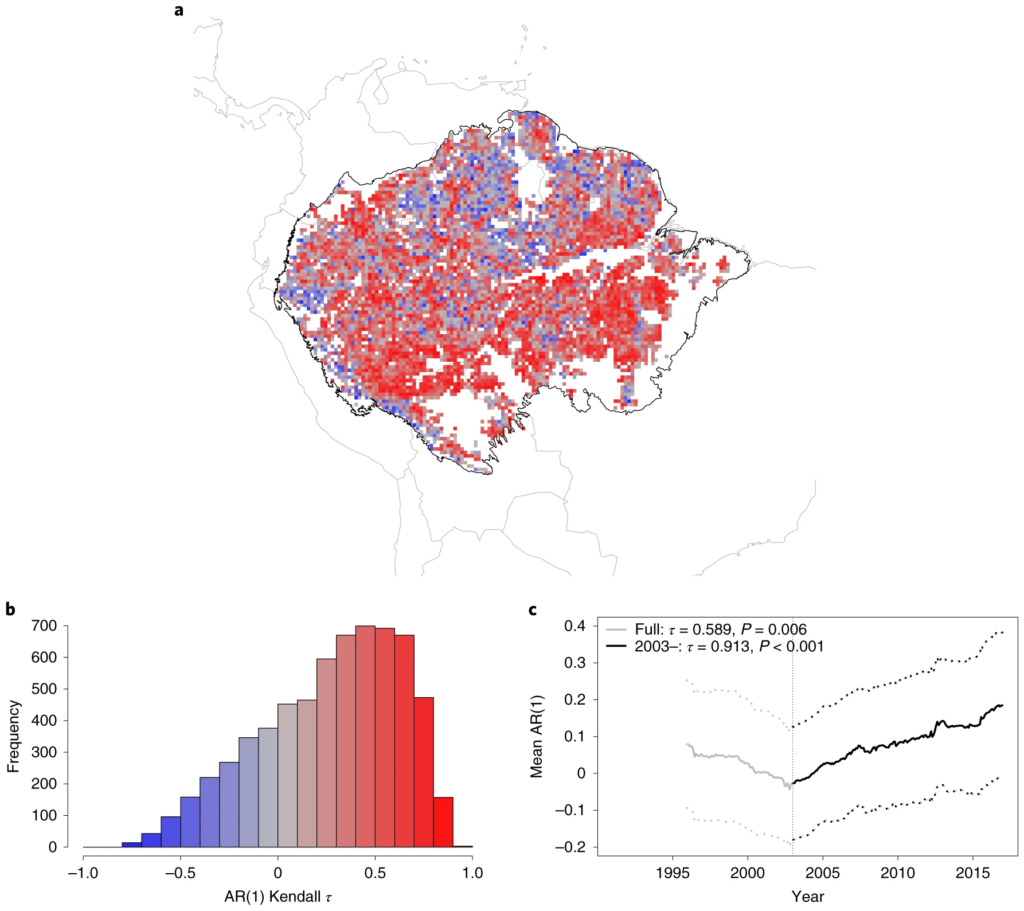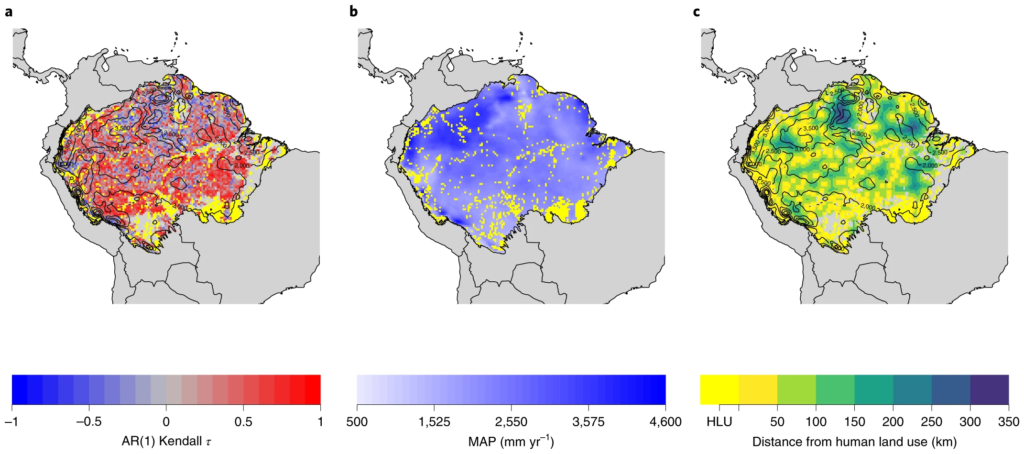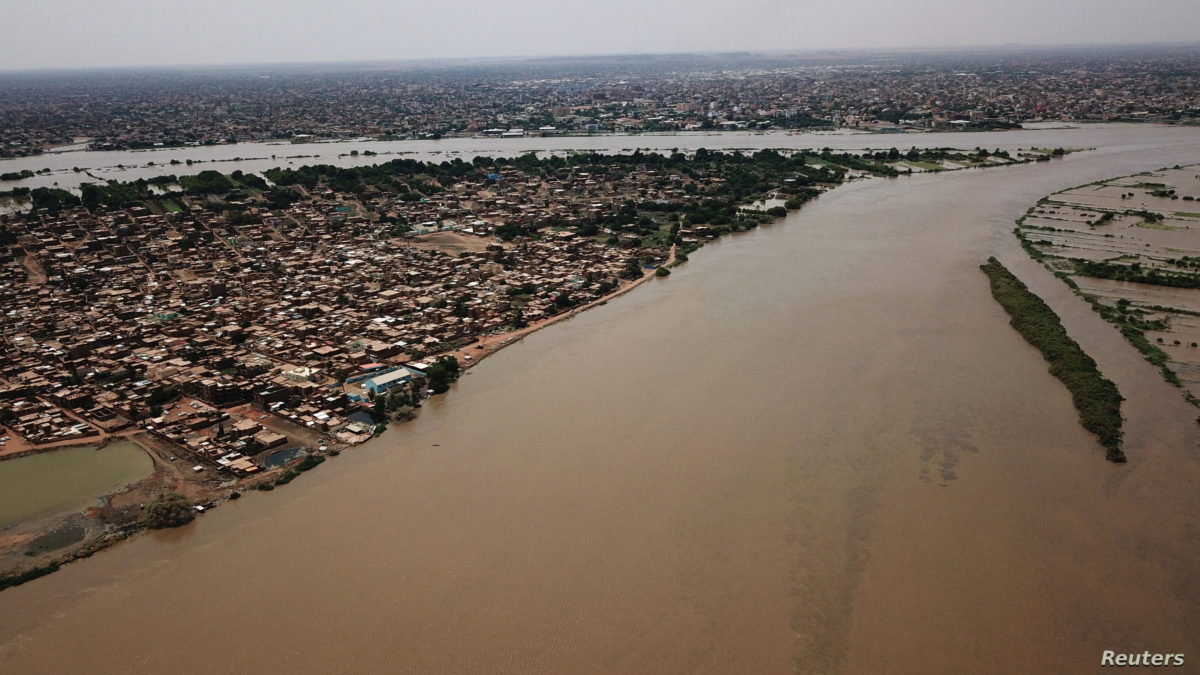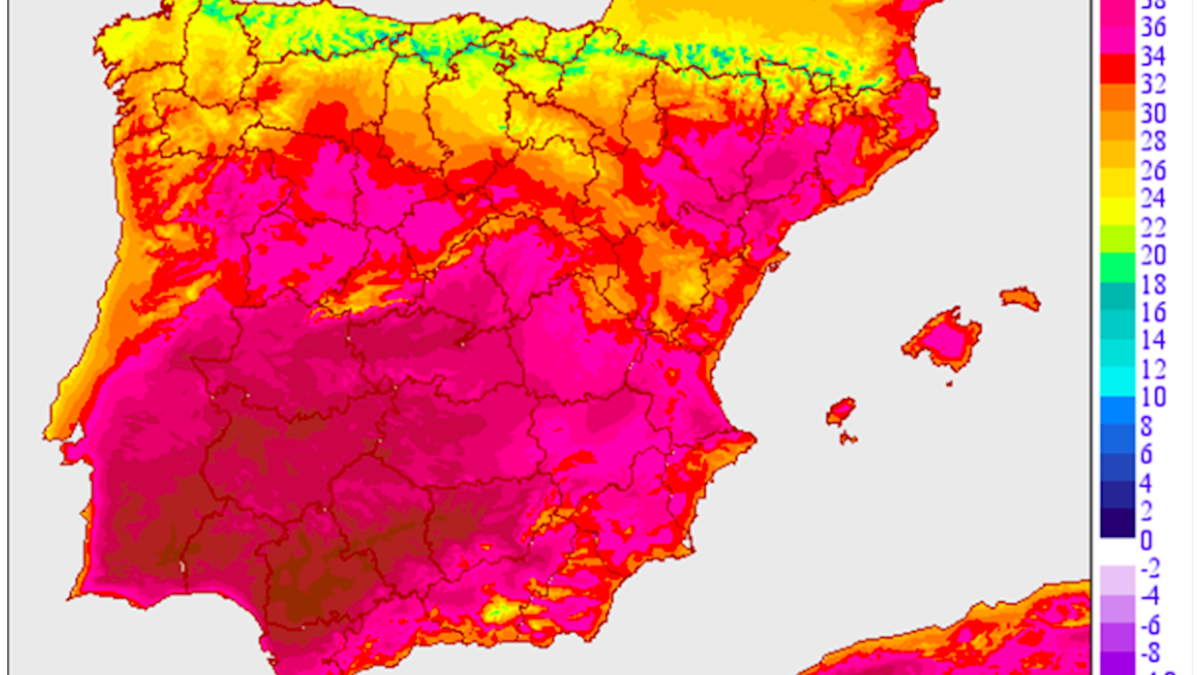The Amazon Rainforest is approaching a tipping point beyond which it would become savannah – “When it will be observable, it would likely be too late to stop it”

By Eric Shank
14 March 2022
(Salon) – A vast expanse of unique biological diversity hangs in the balance as the “lungs of the world” approach a tipping point from which there is no recovery. The Amazon Rainforest is losing its ability to regenerate, reported a peer-reviewed study, Monday, in Nature Climate Change.
For 10% of all known species on Earth, that means the destruction of their only habitat with a profoundly amplifying effect on climate change. Over two-thirds of the size of the United States, the Amazon provides a critical “carbon sink,” sequestering about 123 billion tons of carbon dioxide. As climate change and deforestation progress, the Amazon verges on outright collapse.
If it does, only savanna-like grasslands will remain, many experts believe. However, what that transition actually looks like depends on how fast climate change progresses, Dr. Chris Boulton, lead author of the study, told Salon.
“If it was slower then there’s the chance that drought-resilient trees could come in and establish themselves,” he suggested. “Then you might see a seasonally dry forest.”
Through analysis of satellite data, using a measurement called Vegetation Optical Depth — a measure of the total biomass of trees and other plants in a given area — researchers found that three-quarters of the Amazon have been losing resilience against logging, fires, and other biomass loss since 2000. This loss was “consistent with the approach to a critical transition,” they write.
Dr. Niklas Boers, another collaborator from Potsdam Institute for Climate Impact Research and Technical University of Munich, called the findings “alarming,” particularly given the projections from a United Nations climate committee that predicted drying of the Amazon Basin under a likely climate scenario.
Boulton, a researcher at the University of Exeter, compares such shifts to suddenly stumbling over a cliff. On the surface, the Amazon may not appear to change much over time, with the forest roughly maintaining its biomass. Meanwhile, underlying stability continues to erode. Actual die backs of vegetation, he said, will be sudden.
“When it will be observable, it would likely be too late to stop it,” Boers said in a statement. [more]
The Amazon Rainforest is approaching a “tipping point” beyond which it would become barren

Amazon rainforest losing resilience
7 March 2022 (University of Exeter) – The Amazon rainforest is becoming less resilient – raising the risk of widespread dieback, new research shows.
The study found that resilience – the ability to recover from events such as droughts or fires – has declined consistently in more than three quarters of the rainforest since the early 2000s.
Experts believe the Amazon could soon reach a tipping point, crossing of which would trigger dieback and turn much of the forest to savannah, with major impacts on biodiversity, global carbon storage and climate change.
It is not clear when that critical point could be reached, but the study says the loss of resilience is “consistent” with an approaching tipping point.
The research was carried out by the University of Exeter, the Potsdam Institute for Climate Impact Research (PIK) and Technical University of Munich. Exeter and PIK recently signed an agreement to jointly investigate climate change tipping points.
“The Amazon rainforest is a highly complex system, so it’s very difficult to predict if and when a tipping point could be reached,” said Dr Chris Boulton, of Exeter’s Global Systems Institute.
“We now have satellite data on the Amazon that covers a sufficiently long timespan to observe changes in resilience.
“Our study looked in detail at month-to-month changes as the forest responded to fluctuating weather conditions.
“We studied metrics that are theoretically related to the rate of recovery after perturbations (external events that affect the forest), to see how the resilience of the Amazon ecosystem has changed in recent decades.
“Resilience dropped during the major droughts of 2005 and 2010, as part of an ongoing decline from the early 2000s to the most recent data in 2016.
“As a result, we would expect the forest to recover more slowly from a drought now than it would have twenty years ago.”
Resilience actually increased from 1991 to around 2000, but the consistent decrease since then has taken resilience well below 1991 levels.
“Deforestation and climate change are likely to be the main drivers of this decline,” said Professor Niklas Boers, of PIK and the Technical University of Munich.
“Resilience is being lost faster in parts of the rainforest that are closer to human activity, as well as those with less rainfall.
“Many researchers have theorised that a tipping point could be reached, but our study provides vital empirical evidence that we are approaching that threshold.”
The study used various data sources, including satellite data on Vegetation Optical Depth (VOD) – a measure of the total biomass of trees and other plants in a given area.

Despite climate change, average rainfall in the Amazon has not changed dramatically in recent decades.
However, dry seasons have become longer and droughts have become more common and more severe.
The study’s VOD measurements suggest overall biomass has declined slightly, but the loss of resilience is much more pronounced.
The researchers emphasise this distinction between resilience and the average “state” of the rainforest.
“The rainforest can look more or less the same, yet it can be losing resilience – making it slower to recover from a major event like a drought,” explained Professor Tim Lenton, Director of Exeter’s Global Systems Institute.
“If too much resilience is lost, dieback may become inevitable – but that won’t become obvious until the major event that tips the system over,” said Professor Boers.
“Many interlinked factors – including droughts, fires, deforestation, degradation, and climate change – could combine to reduce resilience and trigger the crossing of a tipping point in the Amazon.”
Professor Lenton added: “This gives new compelling evidence to support efforts to reverse deforestation and degradation of the Amazon to give it back some resilience against ongoing climate change.”
The research is part of the project “Tipping Points in the Earth System” funded by European Union’s Horizon 2020 programme, and received additional funding from the Leverhulme Trust and the Alan Turing Institute.
The paper, published in the journal Nature Climate Change, is titled: “Pronounced loss of Amazon rainforest resilience since the early 2000s.”
Amazon rainforest losing resilience
Pronounced loss of Amazon rainforest resilience since the early 2000s
ABSTRACT: The resilience of the Amazon rainforest to climate and land-use change is crucial for biodiversity, regional climate and the global carbon cycle. Deforestation and climate change, via increasing dry-season length and drought frequency, may already have pushed the Amazon close to a critical threshold of rainforest dieback. Here, we quantify changes of Amazon resilience by applying established indicators (for example, measuring lag-1 autocorrelation) to remotely sensed vegetation data with a focus on vegetation optical depth (1991–2016). We find that more than three-quarters of the Amazon rainforest has been losing resilience since the early 2000s, consistent with the approach to a critical transition. Resilience is being lost faster in regions with less rainfall and in parts of the rainforest that are closer to human activity. We provide direct empirical evidence that the Amazon rainforest is losing resilience, risking dieback with profound implications for biodiversity, carbon storage and climate change at a global scale.
Pronounced loss of Amazon rainforest resilience since the early 2000s


